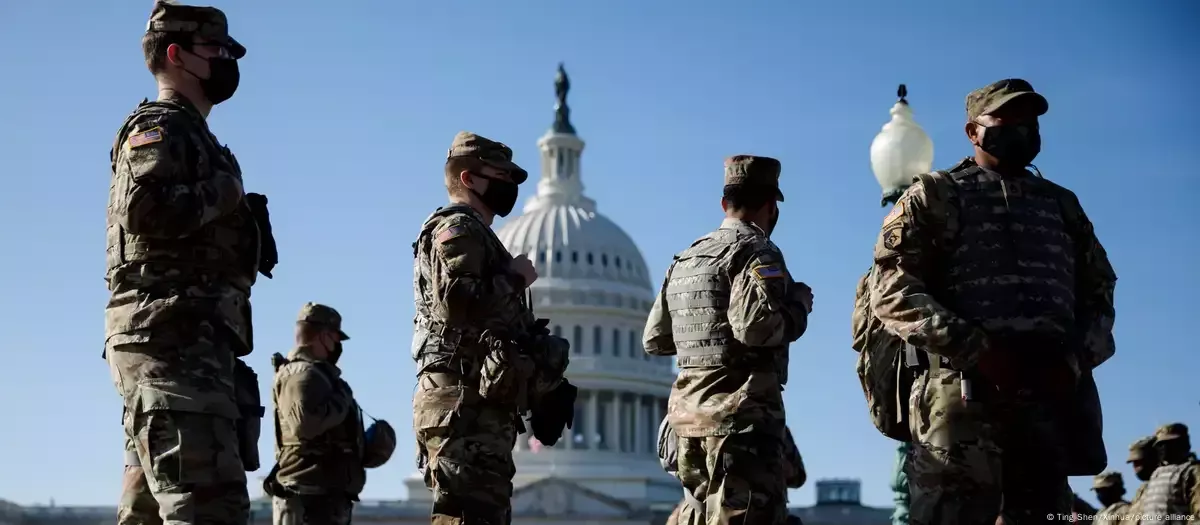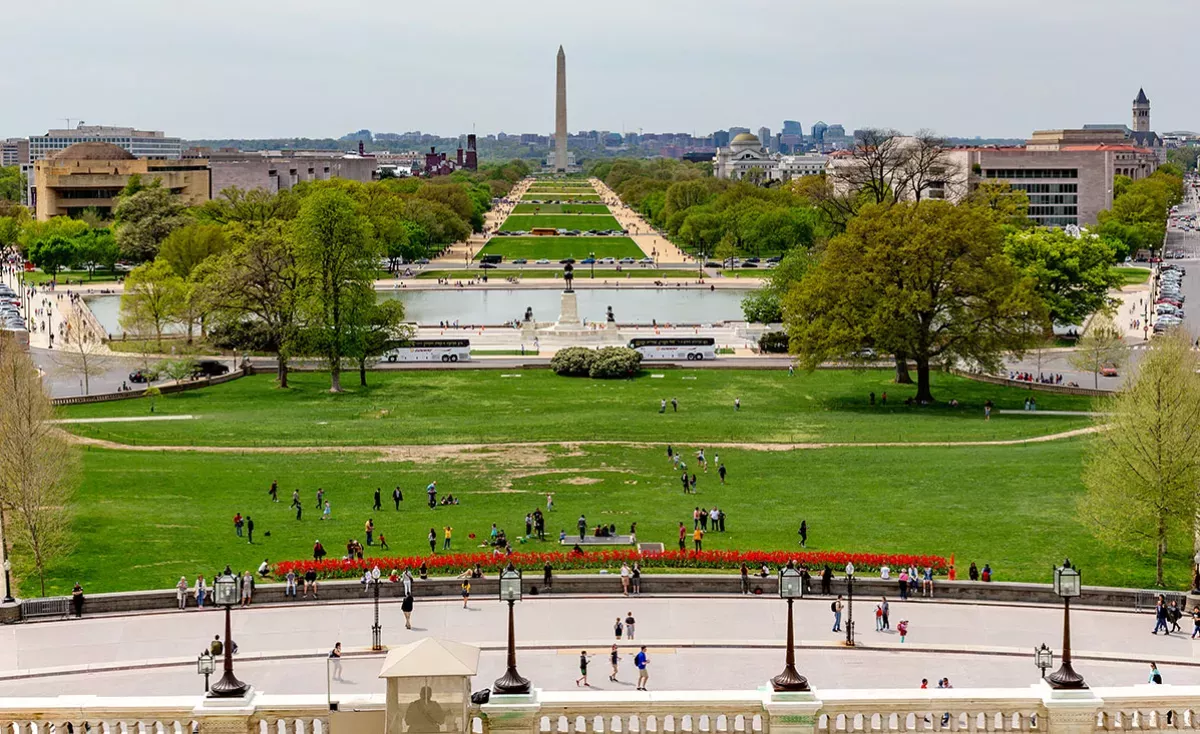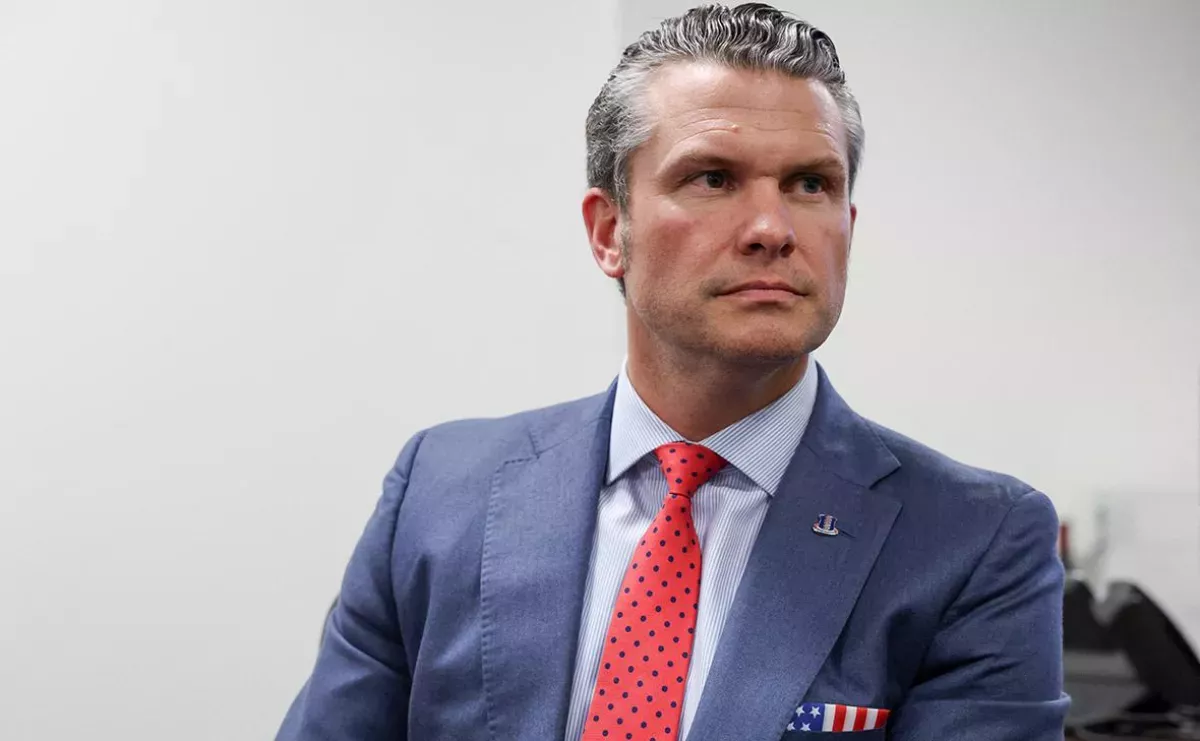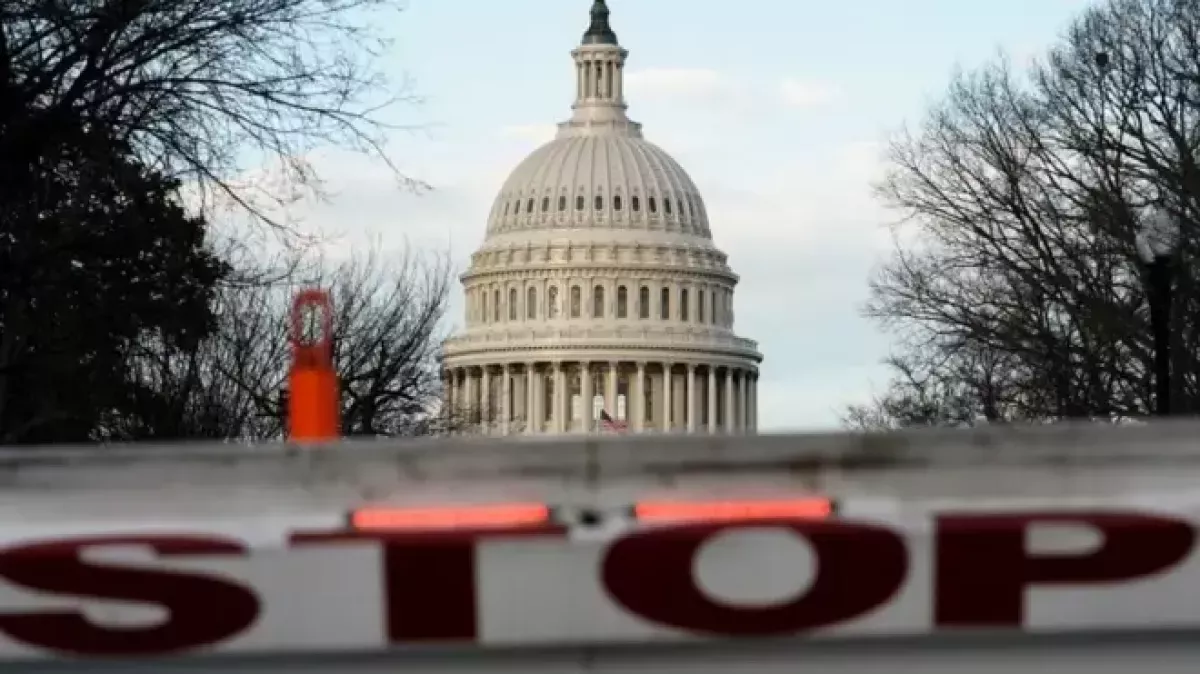Revolution marches across the US How Trump is reshaping America
The revolution is confidently marching across the United States. The uncompromising political and ideological struggle is not only a cause but also an inevitable consequence of everything happening.
The great American revolution, named after Donald Trump, continues. Everything is going according to plan: the revolution has a beginning but no end. Especially given the political realities in the U.S., where numerous value-based, institutional, and socio-economic contradictions have clearly accumulated, the end of this process is still far off—no one knows where it will ultimately lead.
Manifestations of the American revolution bring news almost every day marked as “breaking,” which are then discussed with heightened emotional intensity both within the country and far beyond its borders. These manifestations are clearly visible on the streets of many American cities. In the U.S. capital, for example—which has traditionally been a stronghold of liberalism and the so-called “deep state”—they are particularly striking.
Last week, attention was drawn to three key manifestations of the intensifying American revolution.

First, there is the expanding political struggle over the Trump administration’s use of domestic troops (the National Guard) to counter crime and illegal immigration in cities.
Second, there are statements made by Trump himself and his Secretary of Defense (of War), Pete Hegseth, during a meeting with the American general staff.
Third, there is the ongoing government shutdown. The author of these lines had the opportunity to observe all three manifestations both in the media and on the streets of Washington, D.C.
National Guard and street security
On October 4, Judge Karin Immergut issued a temporary order to halt the mobilisation of Oregon National Guard units intended to maintain security in Portland. Previously, in response to ongoing protests outside the city’s immigration centre, the U.S. President and the Pentagon had ordered the deployment of 200 soldiers from the state’s domestic troops for a 60-day period. The state authorities, represented by Democrats, opposed the federal government’s actions.
Following the court ruling, the White House decided to deploy National Guard troops from other states—California and Texas—to Portland.

However, on October 5, Judge Karin Immergut blocked this decision as well. In her view, future court proceedings will inevitably establish that, in the context of Portland, the U.S. President is exceeding his constitutional authority by mobilising federal troops to address local issues—an action that likely violates the Tenth Amendment. The latter specifies that “The powers not delegated to the United States by the Constitution, nor prohibited by it to the States, are reserved to the States respectively, or to the people.”
The political and legal battles surrounding the situation in Portland have become the latest illustration of the confrontation between Republicans and Democrats over whether the National Guard can be used to combat crime, drug abuse, and illegal immigration. The White House intends to deploy domestic forces to a number of major American cities, citing what it considers a successful experience in Washington, D.C.
Indeed, the streets of Washington have appeared calmer and safer since the Trump administration deployed National Guard units to the city about two months ago. At least some areas of the U.S. capital—where even long-time residents once feared to walk—no longer evoke fear or disgust due to the previously rampant drug use and crime.

Most of the parks and squares in the capital have ceased to be gathering places for the homeless and centres of unsanitary conditions. This stark contrast is clearly visible and undoubtedly gives the U.S. President and his supporters an additional argument in favour of using the National Guard to restore public order in cities.
Of course, it would be naïve to assume that the deployment of around 800 National Guard soldiers has instantly solved all the problems on Washington’s streets. However, even many members and supporters of the Democratic Party reluctantly admit that the statistics show positive changes. Among Republican voters, some are even euphoric about the results achieved.
At the same time, Democrats quite reasonably question the sustainability of these positive shifts. After all, patrols by the National Guard in Washington cannot, by themselves, eliminate the deep-rooted causes of social distress and its outward manifestations—crime and drug abuse. It is obvious that more systemic solutions are needed, both in terms of maintaining daily public order and in social policy. Yet the very fact that this once untouchable issue has sparked such debates—no longer hypothetical ones—can already be considered the first achievement of Trump’s actions.
Democrats will continue to resist the White House’s desire to deploy National Guard forces across various states, especially those controlled by the Democratic Party. They see multiple risks in such actions — for instance, that federal intervention could trigger new outbreaks of local violence and that the deployment of domestic troops could ultimately become a tool in internal political struggles.
Nevertheless, this manifestation of Trump’s “revolution” will inevitably shake up various layers of America’s long-overripe problem of urban crime. Whether it will eventually lead to fundamentally new approaches to addressing this issue remains to be seen.
Meeting with the generals
Amid heightened debates about the role and potential of the National Guard, Secretary of Defense Pete Hegseth convened more than 800 American generals and admirals in Washington on September 30. These officers serve in various parts of the world. Before this elite audience of the U.S. Armed Forces, both the Secretary of Defense (now increasingly referred to as the “Secretary of War”) and President Trump delivered speeches.
Their addresses were awaited in the American capital with great anticipation—and even tension—since it is highly unusual for the entire senior command, including those stationed on distant continents, to be gathered in Washington.

In the end, Trump and Hegseth addressed the American military leadership with theses that fully reflect the nature of the revolutionary moment. The essence of their speeches can be summarised as follows: the liberal practices that, in the view of conservatives, have for decades undermined the combat readiness of the U.S. Armed Forces will be brought to an end. The current administration does not suffer from excessive political correctness and will not hesitate to take any measures necessary to eliminate norms and standards it deems ideologically unacceptable.
Those who disagreed were simply invited to stand up and leave the room—and then resign. According to the Trump administration, only in this way can the United States maintain its status as the world’s leading military superpower amid growing systemic competition with China and the increasing complexity of global affairs across various regions.
What the two key speakers said carried both symbolic and practical significance. As The New York Times aptly observed, Donald Trump’s address “was a speech unlike any other and just like every other.” Indeed, he repeated much of what he says publicly almost every day and on a wide range of occasions. Yet this time, he placed special emphasis on two main points.
First and foremost, Trump emphasised that his decision to rename the Pentagon as the Department of War should not be seen merely as rebranding. In his words, “it's really a historic reassertion of our purpose, our identity and our pride.” He also urged the assembled military leadership to confront not only external threats but internal ones as well: “we have to handle it before it gets out of control.” Here, he drew a direct link to the issue of deploying the armed forces to restore order in American cities: “[We] should use some of these dangerous cities as training grounds for our military.”
Hegseth, for his part, spoke of the need to revive the warrior spirit within the U.S. Armed Forces and to break with the liberal legacy of woke culture. To that end, he recalled the ancient maxim, “To ensure peace, we must prepare for war,” but went even further. The most controversial part of his speech concerned a ban on beards and long hair for servicemen, as well as new physical fitness requirements. He declared that the “highest male standards” of combat readiness were being introduced.

From now on, all American military personnel will be required to pass physical fitness tests twice a year, because, as Hegseth put it, “It's unacceptable to see fat generals and admirals in the Pentagon.” His department will also continue to review and abolish programmes that promote gender and racial equality.
Needless to say, the meeting between Trump, Hegseth, and the military leadership provoked a storm of emotions among Americans—both experts and ordinary citizens alike. In Washington, lively discussions on the subject could be heard everywhere: over morning coffee in cafés, during think tank meetings, and at bars over an evening pint. Opinions varied. Yet what was most telling was that both critics and supporters of the incumbent president took what they heard seriously. The sarcastic smiles that had often accompanied Trump’s earlier statements at the beginning of the year were gone. And that, in itself, is another clear indicator of how revolutionary the current situation has become.
Shutdown: politics as both cause and consequence
Finally, the last major development that drew the most attention—and equally highlights the revolutionary nature of what is happening in the United States—began at 12:01 a.m. on October 1. This was the so-called shutdown, meaning the suspension of federal government funding after lawmakers failed to pass the new fiscal year’s budget in time.
Several decades ago, the very word “shutdown” sounded frightening. But in recent years, both Americans themselves and the rest of the world have grown accustomed to the idea that internal political disputes in the U.S. can occasionally leave the federal government temporarily unfunded. Even so, the event remains extraordinary. The last such shutdown at the federal level occurred in 2019, lasting a full 35 days while Trump’s first administration and the Democratic opposition clashed over the president’s demand to build a wall on the southern border.
This time, the uncompromising disputes have centred on healthcare issues. The Democrats insist on extending subsidies for medical services and reinstating funding for a number of healthcare programmes that were cancelled over the summer. Public opinion polls, as expected, show that the Democrats’ position on these issues enjoys broad support in society—hence their confidence in holding their ground. But the Republicans have no intention of backing down either.
On the contrary, the Trump administration openly admits that it intends to use the unfolding situation to further advance its plans to downsize and reform the federal bureaucracy, while increasing pressure on the Democrats. The head of the White House himself has promised to take measures during the shutdown that will have “bad” and irreversible consequences for the Democrats. These include, for example, mass layoffs of Democratic supporters within federal agencies and cuts to programmes lobbied for by the Democratic Party. He summed up his intentions by saying that the shutdown offers an opportunity to “get rid of a lot of things that we didn’t want, and they’d be Democrat things.”

Thus, the ongoing shutdown fits organically into the intense revolutionary dynamics in the United States and vividly illustrates its essence: uncompromising political and ideological struggle is not only the cause but also the inevitable consequence of what is happening. It is a kind of self-reinforcing spiral that has a life of its own. When—and if—this spiral might ease remains an open question.
Meanwhile, on the sunny morning of October 1, little on the streets of Washington suggested that anything extraordinary was happening. Traffic congestion in the city centre, in particular, did not noticeably decrease compared to previous days, when federal officials were still rushing to their paid jobs as usual. This reflects one of the most fascinating realities of our time: massive, historically significant changes are taking place right before our eyes in our everyday lives. For this reason, it is sometimes difficult to grasp the scale of these events in relation to their real long-term consequences. Yet the scale itself does not diminish.








